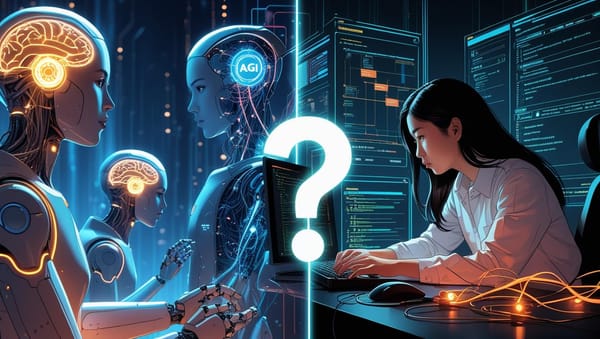Why AI Projects Fail: A Learning Problem, Not Just a Tech Problem
Knowledge management systems work best when they match how companies actually learn and share information. I recently consulted with an AI engineering team whose project failed not because the technology was bad, but because the company approached it the wrong way. This case study shows how being too focused on fancy tech can actually hurt the basic learning processes that make knowledge systems valuable.
The Failed Project: When Smart Tech Meets Real-World Problems
The engineering team had built a custom AI system by fine-tuning language models using the company's knowledge bases. In the lab, it worked great. But when they used it with real users, everything fell apart: issues ranging from hallucinations, incorrect or outdated knowledge, lack of recent updated knowledge (the "AI brain" is essentially frozen in time, to cost overruns, and ultimately mistrust from employees.
Problem #1: Costs That Kill Learning
Fine-tuning requires expensive computer servers that run 24/7. Even when no one uses the AI, the client still pays for 744 hours of server time each month. Costs range from $1,116 per month for a slow setup to over $17,000 monthly for a fast one.
At $500 a month, an AI system might be worth it as an interesting brainstorming tool, even with some flaws. But at $20,000 a month with hallucinations, wrong answers, and user mistrust, it became like having an unreliable team member who costs more than most employees' salaries. The return on investment simply wasn't there - teams couldn't justify paying premium prices for a system that gave incorrect information and broke down the trust that's essential for organizational learning.
Problem #2: Rules That Complicate Everything
The client was in Europe, where strict data laws (GDPR) require that personal information stays within EU borders. This meant they couldn't use cheaper hosting options from other countries.
These legal requirements show how the regulatory space gets mixed into technical decisions. Companies have to develop new skills in privacy-friendly AI, which takes time and expertise most teams haven't developed yet. Even though there are GDPR friendly AI Datacenters, fine-tuned models can't take advantage of most of them.
Problem #3: When AI Makes Stuff Up
Fine-tuned AI models still "hallucinate" - they confidently give wrong answers. Nothing kills user trust faster than unreliable information.
These unreliable outputs broke the feedback loops that help organizations learn. When users can't tell if information is accurate or made-up, they stop trusting and using the system entirely.
Problem #4: Updates Require Starting Over
Every time the company wanted to add new information, they had to fine-tune the entire system again. When the base AI model got updated (which happens yearly), they'd have to start the whole fine-tuning process from scratch.
This created learning silos tied to specific AI models, making it impossible for the organization to adapt and grow their AI capabilities over time. ChatGPT5 was just released, and they had to train the model again if they wanted to take advantage of it.
The Better Solution: Smart RAG
This is why Smart RAG (Retrieval-Augmented Generation) often works better than fine-tuning. Instead of training the AI on your data, Smart RAG lets the AI look up information from your databases in real-time.
Smart RAG succeeds because it preserves how organizations naturally learn and work:
- Easy updates: Content creators can add new information instantly, keeping the rapid feedback cycles that drive continuous learning
- Flexible AI models: You can easily switch between different AI systems (ChatGPT, Claude, etc.) without starting over
- Reduced hallucinations: The AI retrieves actual content from your database instead of guessing from memory
- Lower costs: No expensive 24/7 servers required
Unlike fine-tuning, which locks you into specific models, Smart RAG enables adaptive learning where companies keep the flexibility to evolve their AI capabilities.
Building a Learning Culture for AI Success
Beyond choosing the right technology, successful AI projects require fostering a learning culture where teams can:
- Experiment with different AI models safely
- Quickly update content workflows
- Adapt to changing requirements
- Learn from failures without huge financial penalties
Organizations that treat AI adoption as a learning process - rather than just a technology deployment - are much better positioned to navigate the trade-offs and constantly changing AI landscape.
The Real Lesson
This case study shows how technological learning and organizational learning must work together. Smart RAG systems succeed not just because they're technically better, but because they preserve the learning processes that make knowledge management systems valuable in the first place.
When companies focus only on the most sophisticated technology without considering how people actually learn and work, even brilliant technical solutions can fail spectacularly. The key is choosing approaches that enhance rather than disrupt your organization's natural learning patterns.


